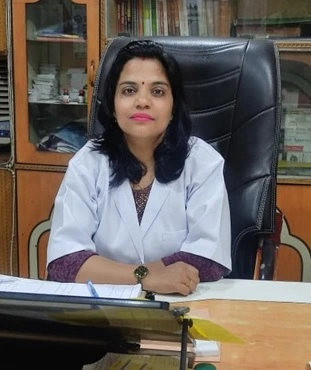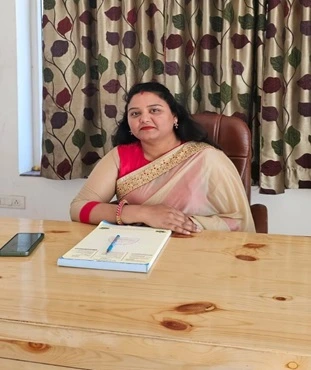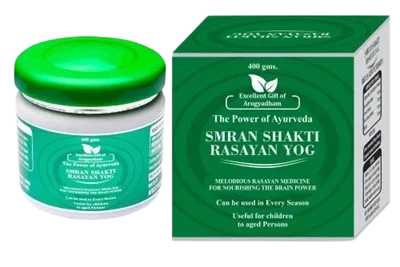
AROGYADHAM
Ayurvedic Doctor in Rishikesh Providing Expert & Personalized Care
At Arogyadham, we believe healing starts with trust. As the best Panchkarma centre in Rishikesh. Our experienced Ayurvedic doctor in Rishikesh provides gentle, personalized treatments rooted in ancient traditions, helping you feel balanced, restored, and truly cared for.

About Arogyadham Ayurveda Center
Arogyadham Ayurveda Treatment Center is a leading and widely renowned Ayurvedic treatment center in India. With over a century of expertise, we helps in holistic healing for chronic health issues and wellness treatments.
Under the guidance of Dr. Rakesh Agarwal and our expert team, best Panchkarma centre in Rishikesh, we support customized Ayurvedic treatments for long-term health imbalances such as liver concerns, stress, and emotional well-being. Our proven therapies promote natural healing within a supportive timeframe, helping individuals regain a healthy and fulfilling life.

Meet Our Specialized Ayurvedic Doctors






Dr.Rakesh Agarwal Ayurvedic Physician
Dr.Neelam Agarwal Ayurvedic Physician
Dr.Amrit Raj Ayurvedic Physician
Dr.Arjun Raj Ayurvedic Physician
Dr.Mitalee Raj Ayurvedic Doctor
Dr.Surbhi Agarwal Ayurvedic Doctor
Ayurvedic Services We Offer
Experience authentic Ayurvedic healing in the heart of Rishikesh
Arogyadham Retreat is more than just a getaway — it’s a guided journey into deeper physical, mental, and spiritual wellness, set against the serene Himalayan backdrop. With the expertise of experienced Ayurvedic doctor in Rishikesh and a compassionate team, we create a personalized space for realignment and rejuvenation.
Here’s what you can expect during your stay with us:
What’s Included in Your Retreat Experience:
Personalized consultation with a qualified Ayurvedic doctor in Rishikesh
Daily guided Yoga sessions to restore flexibility and calm the mind
Healing Meditation practices for inner clarity and emotional release
Fresh, organic vegetarian meals tailored to your Dosha, along with herbal teas
Peaceful, private accommodation surrounded by nature
Traditional Ayurvedic therapies and massages to restore internal balance
A reflective nature walk in the serene environment of Rishikesh
Practical sessions on Ayurvedic cooking, Indian culture, and seasonal living
Individual guidance on lifestyle management, sleep, and routines
Access to ancient techniques that improve concentration and focus
- Peaceful spaces for self-reflection and spiritual growth





✨ Our retreat is designed to help you slow down, detoxify, reconnect with yourself, and leave with a renewed sense of clarity, all guided by the principles of Ayurveda and Yoga.
Long-Term Wellness Challenges We Help You Navigate Naturally
At Arogyadham, we understand that today’s fast-paced life can leave lasting imbalances in the body and mind. Instead of focusing on medical terms, we support individuals dealing with deep-rooted discomforts and lifestyle-related concerns through gentle Ayurvedic guidance.
Many guests come to us seeking relief and restoration from:
Persistent fatigue or lack of energy
Digestive imbalances and irregular appetite
Joint stiffness, muscular tension, or recurring body discomfort
Irregular breathing patterns or sensitivity to seasonal changes
Sleep disruptions and restlessness
Hormonal imbalance or irregular cycles
Circulatory sluggishness and heaviness in the body
Emotional stress, low mood, or mental cloudiness
Skin dullness or lack of natural glow
Challenges in metabolic balance or body weight stability

These signs are often messages from the body asking for rest, reset, and realignment — which Ayurveda helps address from the root with a personalized, holistic approach.
 Ayurvedic Healing Therapies & Traditional Practices at Arogyadham
Ayurvedic Healing Therapies & Traditional Practices at Arogyadham
At Arogyadham Retreat, we blend ancient Ayurvedic principles with personalized attention to guide your body and mind back to a state of natural balance. Every guest receives a unique combination of therapies and lifestyle guidance based on their individual constitution (Prakriti) and current state of imbalance (Vikriti).
Our treatments are not designed to target specific diseases, but to support deep detoxification, internal rejuvenation, and mental-emotional clarity — all in a nurturing, non-invasive way.
🌱 Our Ayurvedic Approach Includes:
1. Panchkarma Detox & Body Cleansing
A time-tested purification system to gently eliminate toxins (Ama) from the body and restore Dosha balance. This may include:
-
Abhyanga (therapeutic oil massage)
-
Swedana (herbal steam therapy)
-
Basti (medicated oil/ghee enemas)
-
Nasya (nasal oil therapy)
-
Virechana (gentle herbal purgation)

2. Herbal Support & Natural Formulations
We prepare traditional herbal combinations that align with your Dosha type, promoting long-term wellness through:
Rasayana (rejuvenation therapy)
Medhya herbs (supporting mental clarity)
Immunity-boosting herbal decoctions
Safe, food-grade Ayurvedic supplements

3. Internal Healing through Diet & Lifestyle
Guided by Ayurvedic nutrition, you’ll receive:
Personalized daily routines to align with natural rhythms
Seasonal food recommendations to enhance digestion
Lifestyle corrections to reduce stress and stimulate self-healing
Simple kitchen remedies and mindful eating habits

4. Yogic Integration for Energy Alignment
As part of our retreat experience, you’ll also benefit from:
Gentle Yoga asanas (postures) for physical and mental grounding
Pranayama (breathwork) to improve internal energy flow
Meditation and mantra sessions to support inner peace and clarity

Our goal is to awaken the healing intelligence within — through authentic, holistic, and time-honored Ayurvedic traditions.
Our Products



Kesh Rakshak Hair Oil
Nari Saundarya Rakshak Syrup
Samran Shakti Rasayan Yog
Contact to Arogyadham
About Us
Since 1982, Vaidyaratnam Dr. Rakesh Agarwal, Dr. Neelam Agarwal, Yogi Dr. Amrit Raj, and Dr. Arjun Raj have upheld these rich traditions. They have been dedicated to supporting patients in their health journeys, fostering personal and spiritual growth, and educating them on how to take greater responsibility for their well-being and life.
We support patients Ayurvedic treatment, addressing a wide range of health problems with proven, natural remedies.
- +91 73023 55483
- arogyadhamindia@gmail.com
- 1, Maa Yoga Ashram, Near Regenta Retreat, Tapowan, Rishikesh
Copyright © 2025, Arogyadhamindia